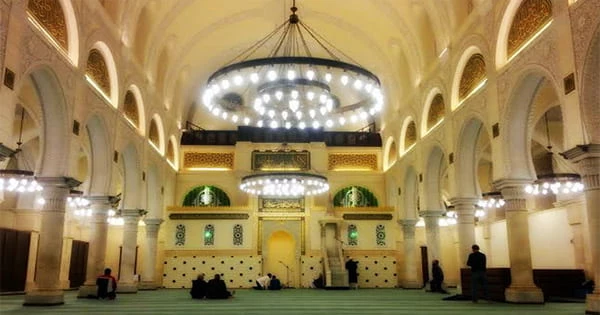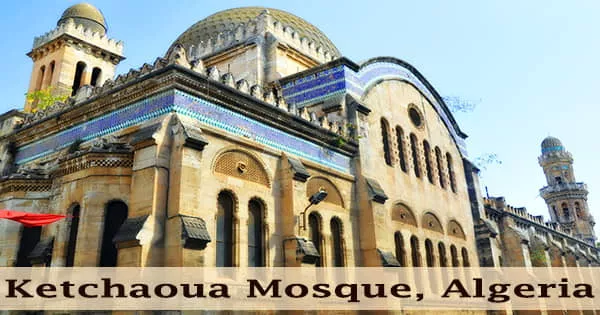The Ketchaoua Mosque (Arabic: جامع كتشاوة, Djamaa Ketchaoua) has always been a religious landmark, yet it has undergone a few transformations over time. It is a mosque in Algiers, Algeria’s capital. It was constructed in the 17th century during Ottoman administration and is located at the foot of the Casbah, a UNESCO World Heritage Site. It was first established by the Rebai tribe in 1436 at the “Goat Plateau” water source, from which Ketchaoua gets its name, and then enlarged by the Ottoman Regency around 1613. The structure has twice collapsed. The mosque was the logistical and symbolic center of the pre-colonial city of Algiers, as it lies atop the first of the Casbah’s numerous steep stairways. The mosque’s remarkable combination of Moorish and Byzantine style is well-known. The Ketchaoua Mosque was built in 1612 and served as a mosque until 1845. It was restored in 1794 on Hasan Pasha’s initiative, influenced by Turkish mosques designed by Christian architects. The edifice was requisitioned and demolished by French General Savary when France seized Algeria three decades later. After several years as the Cathedral of St Philippe, the structure was once again transformed into a mosque in 1962. Despite these migrations between two holy faiths over the previous four centuries, the mosque has kept its original grandeur and is one of Algiers’ most popular tourist sites. The Turkish Agency for Cooperation and Coordination has been consolidating and restoring the Ketchaoua mosque for several years.

Thankfully, the building and stunning architecture have survived and may still be admired today. The Ketchaoua Mosque has become one of Algiers’ most well-known attractions. The old Casbah in Algiers, which is located in the northern section of the city, has the Ketchaoua Mosque. It lies about 250 meters west of the Djamaa el Kebir mosque, close to the Archbishop’s Palace of Algiers and the Algerian National Library. The Ketchaoua Mosque is located at the end of the Casbah and is not easily missed by visitors to Algiers. The mosque, which was built during the Ottoman Empire’s reign, was originally the city’s focal point. Its important location, on the first of the Casbah’s stairways leading to the city’s five gates, in the aristocratic neighborhood, where the Ottoman Regency’s rich and famous royal family members, political significance, and other rich business magnates dwelt. The twenty-three-step flight of steps leading to the mosque door is the first element that attracts visitors’ attention. The spectacular portico with its amazing decorations and black marble columns is unmistakable and stunning, despite its threatening appearance. The mosque’s main entrance is reached through a flight of 23 steps. An ornate portico flanks the entry, which is supported by four black-veined marble columns. Arcades with white marble columns may be found inside the mosque. The mosque’s interior features exquisite arcades, white marble columns, lovely chambers, minarets, and ceilings with unique Moorish plasterwork. The mosque has two octagonal minarets flanking the entrance, with Byzantine and Moorish designs and decorations. It overlooks the public square in the Casbah, with the sea in front; it has two octagonal minarets flanking the entrance, with Byzantine and Moorish design and decorations. Many of the white marble columns date back to the mosque’s inception. The remains of San Geronimo are enshrined in a tomb in one of the mosque’s halls. The mosque, like the rest of the Kasbah, is a UNESCO World Heritage Site. It is the consequence of Algiers’ centuries of history. The Algerian Heritage Department began work on the octagonal minarets, the main fascia’s central vault, and the adjoining staircase inside the mosque in 2009. With the restoration of the Ketchaoua Mosque’s minaret, which was on the verge of collapsing, plans were established for implementation in three stages, including the restoration of the Casbah itself. Tourists visiting Algiers are advised to pay a visit to this old mosque and marvel at its grandeur. It’s a building that serves as both a mosque and a monument, softly reminding the city of its rich and varied history.
















